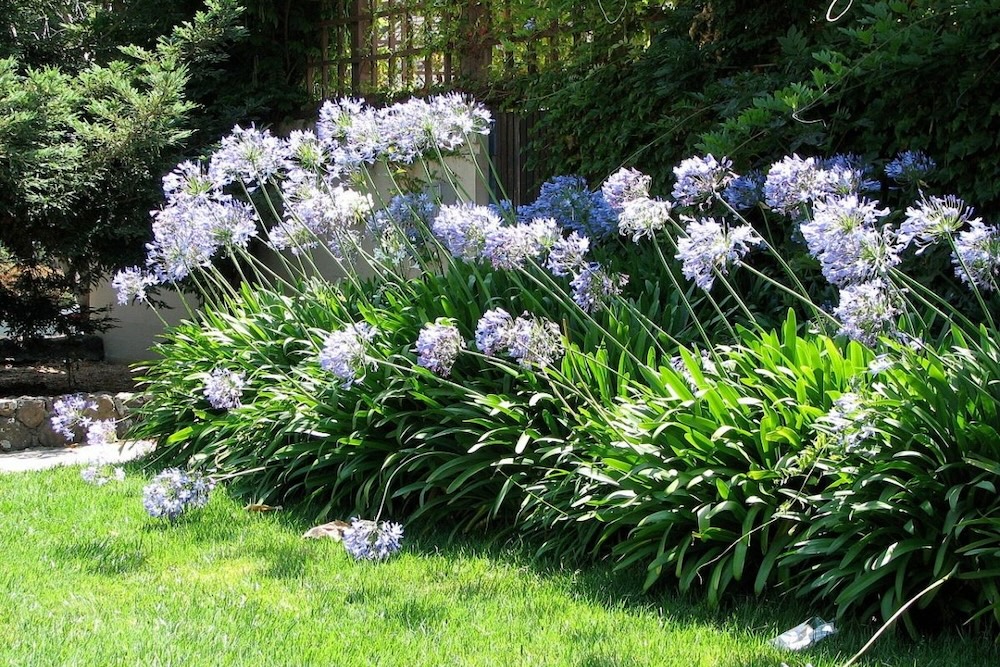Unleashing the Secret to Effective Agapanthus Growing: Advice for a Flourishing Yard
In the realm of horticulture, growing agapanthus effectively needs a tactical technique that incorporates various facets of plant treatment. By understanding the subtleties of agapanthus growing, one can produce a setting where these plants grow and grow generously.
Planting Agapanthus: Finest Practices
When planting Agapanthus, appropriate dirt preparation is important for making certain effective growth and growth of these gorgeous flowers. Agapanthus, commonly referred to as Lily of the Nile or African lily, flourishes in well-draining dirt with a somewhat acidic to neutral pH level - Agapanthus. Before growing, it is crucial to amend heavy clay soils with natural issue such as compost or peat moss to improve water drainage and offer crucial nutrients for the plants
To plant Agapanthus, pick an area that obtains complete sunlight to partial shade, as this will advertise healthy growth and abundant blooming. Dig an opening two times the diameter of the plant's origin sphere and put the Agapanthus at the exact same depth it was formerly growing. Delicately backfill the opening with dirt, pushing down strongly to eliminate any air pockets around the roots.
Water the recently planted Agapanthus extensively and proceed to maintain the soil uniformly damp, particularly during the plant's energetic growing season. Agapanthus. Applying a well balanced plant food once a month can additionally sustain the plant's development and blooming. By following these finest methods for planting Agapanthus, you can create a spectacular screen of these exciting blossoms in your garden
Ideal Soil Issues for Agapanthus
For optimal growth and blooming success of Agapanthus plants, guaranteeing the soil problems are optimal is important. Agapanthus thrives in well-draining dirt with a somewhat acidic to neutral pH degree ranging from 6.0 to 7.0. This sort of soil permits ample water drain, stopping waterlogging which can bring about root rot. To boost dirt water drainage, consider including natural issue such as garden compost or peat moss when preparing the planting website. Moreover, Agapanthus favors dirt that is rich in nutrients, so integrating a well balanced plant food during the expanding season can promote healthy growth and vibrant blooms.

Watering and Fertilizing Tips
To guarantee healthy growth and lively blooms, appropriate watering and fertilizing techniques are essential for effective Agapanthus farming. Agapanthus plants profit from normal watering, specifically during the expanding season.
When it comes to fertilizing Agapanthus, a balanced fertilizer with equal components nitrogen, phosphorus, and potassium can be used in the spring to promote healthy growth and flowering. Slow-release fertilizers are optimal for giving nutrients gradually over an extensive period. Stay clear of over-fertilizing, as this can cause excessive foliage development at the expense of flowers.
In addition, integrating raw material like garden compost right into the soil can boost nutrient levels and boost dirt framework, helping in the general health and wellness of the Agapanthus plants. By adhering to these watering and feeding tips, garden enthusiasts can ensure their Agapanthus plants grow and produce sensational display screens of flowers.
Pruning and Deadheading Techniques
Appropriate trimming and deadheading techniques play an essential duty in keeping the health and wellness and aesthetic appeals of Agapanthus plants, enhancing the necessary techniques of watering and fertilizing for successful growing. Pruning Agapanthus entails getting rid of invested blossom heads, yellowing or dead fallen leaves, and overall shaping of the plant to promote far better development. Deadheading, the procedure of eliminating discolored blossoms, not just boosts the plant's appearance however additionally urges further flowering.
When deadheading Agapanthus, it is recommended to snip off the flower stem at the base utilizing sharp, clean shears. This procedure redirects the plant's power from seed production back into root and foliage development, advertising a healthier and a lot more durable plant. Routine deadheading can prolong the growing period of Agapanthus and protect against self-seeding, which can result in congestion.
In terms view of pruning, Agapanthus generally advantages from a light trim after blossoming to tidy up the plant and motivate fresh development. Cutting down the spent flower stems and removing any type of damaged or dead vegetation helps preserve the plant's vitality and total appearance. Nevertheless, it is important to prevent reducing into the crown of the plant, as this can damage its health.

Protecting Agapanthus From Pests and Diseases
Carrying out efficient parasite and condition administration techniques is crucial to safeguarding the wellness and vitality of Agapanthus plants in cultivation. One common pest that influences Agapanthus is the Agapanthus borer, a caterpillar that passages into the plant, triggering damage to the leaves and flowers.
In addition to bugs, Agapanthus are at risk to conditions such as origin rot and fungal leaf spots. By staying vigilant and resolving parasite and condition issues immediately, gardeners can assist their Agapanthus prosper and thrive.

Final Thought
Finally, successful cultivation of agapanthus requires appropriate planting Full Article techniques, suitable dirt conditions, sufficient watering and fertilizing, normal pruning and deadheading, and security from conditions and pests. By adhering to these tricks and pointers, gardeners can make certain a flourishing garden full of lovely agapanthus blossoms. Agapanthus. Bear in mind to preserve constant treatment and focus to detail to advertise the health and long life of these sensational plants
When planting Agapanthus, correct soil prep work is important for making sure successful growth and advancement of these beautiful flowers.Water the freshly grown Agapanthus extensively and continue to maintain the soil uniformly moist, especially throughout the plant's energetic expanding season.For optimum development and blooming success of Agapanthus plants, making sure the dirt problems are ideal is essential. When transplanting or planting Agapanthus, ensure the soil is well-prepared to browse around here supply the needed foundation for the plants to develop themselves effectively. One usual pest that affects Agapanthus is the Agapanthus borer, a caterpillar that passages right into the plant, causing damages to the fallen leaves and blossoms.